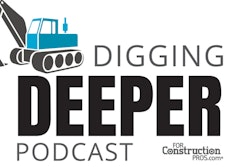
Effective communication is critical to the success of any relationship; this includes business relationships. Ironically, it’s easy to say but difficult to practice. When accounting for the variety of positions, people and goals present in work environments, good communication can feel frustratingly out of reach.
Brian Gareau of Brian Gareau Inc. explains how industry professionals can improve their business – and bottom line – with effective communication. Learn more about industry trends and technologies at https://www.conexpoconagg.com/subscribe/.
Poor Communication, Rework, Bad Data Management Cost Construction Industry $177B Annually
Clarity Is Everything
An incredible number of barriers hinders good communication. The most notable is the implication that it’s not an issue worth devoting resources toward. Communication is simple, but it’s certainly not easy. Gareau says it is very easy to let small, social hazards block a communication channel.
Common problems may include loud machinery that necessitates yelling, which could then be seen as evidence of anger or impatience. Personal relationships may end up being strained, creating a fear of damaging a friendship with constructive criticism. If left unaddressed, minor annoyances are capable of escalating into significant communication hurdles, leading to increased tension, decreased productivity and wavering morale.
What’s a key to improve understanding among employees of varied demographics and communication styles? It all starts with clarity. Being as precise as possible about expectations can sometimes be all it takes to positively affect results. Examples include making a point of deadlines, using clarifying descriptors and requesting specific amounts or methods.
Setting standards and clarifying meaning with all regularly used terms around the workplace is usually helpful; a breakdown of jargon and slang can greatly improve communication abilities, especially for recently hired employees.
Improve Jobsite Communication with Employees - Can We Talk?
Consider Tone
Being flexible in communication style is also a key to securing the best results. Gareau says that when moving between multiple interactions in a single day, it might become necessary to change approach.
Some individuals prefer personal, attentive interactions, while others prefer short and formal meetings. Determining a work environment’s outliers and self-correcting interaction with those people can improve problem solving, especially in groups.
There are also the more technical aspects of how specific words can entirely transform the mood of a conversation or interaction. For example, when giving constructive criticism or potentially negative feedback, it’s important to observe the correct, stress-free moment.
Suggestions should involve using “I” statements to avoid expressing blame, employing active listening to make sure both parties feel heard, and thanking each other after the conversation concludes to express good faith. Without deliberate courtesy, a bit of negative feedback can easily escalate into all-out hostility.
The Unconscious Aspect
Effective interactions can also be hindered by “silent” signals; that is, non-verbal cues that signal failed communication or a lack of quality communication.
Difficult to control, they require deliberate, calculated change to avoid disrupting office communication. A good example is eye contact. Without it, employees can begin to feel unheard or disrespected, immediately affecting the efficiency of communication.
According to U.S. News, another, less obvious example could be good posture, which can communicate confidence. Poor posture, on the other hand, may communicate insecurity and can make other employees believe that the interaction was awkward or unwanted. Other examples include how close to stand next to other employees during conversations, nodding during conversations to communicate listening and not performing other tasks during conversations.
In addition, the mode of communication can affect perceived intentions. Letting co-workers know of a sudden change in deadline via text message could unintentionally communicate an inappropriate apathy about the issue, breeding contention. It could be equally inappropriate, however, to stop by a boss’s office to give him or her multiple project updates. Regular interruptions could be condensed to a single weekly email quite easily.
While it’s easy to have a conversation and move on, it’s difficult to ensure that a message has been understood and received well. However, armed with better communication techniques and habits, workplace interactions can go from dreaded and awkward to productive overnight.
The next CONEXPO-CON/AGG international exhibition for the construction industries will be held March 10-14, 2020 in Las Vegas, USA.


















